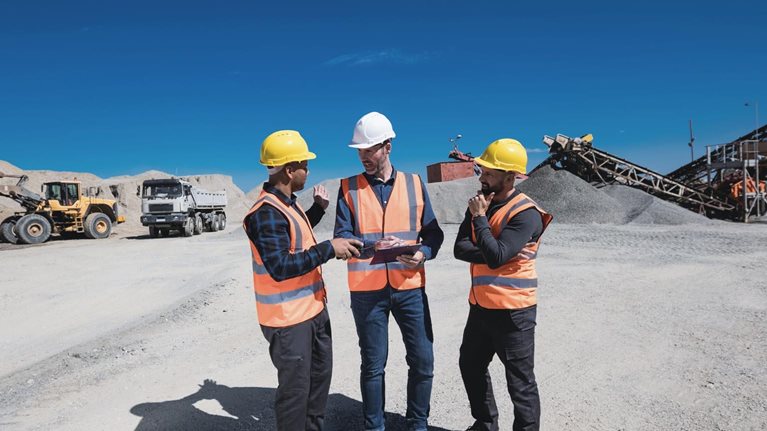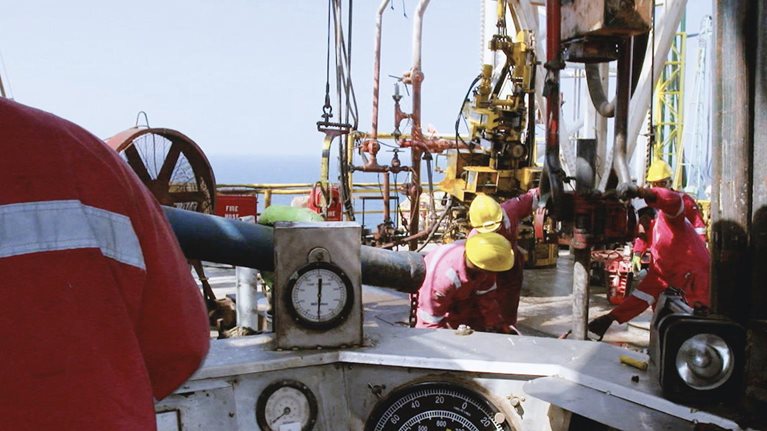When SOCAR Türkiye embarked on an agile transformation to ensure business and cultural excellence within its Refinery and Petrochemicals Business Unit, the organization had wide-ranging ambitions to raise operational performance, embed advanced-analytics capabilities, and boost cultural maturity. Their achievements in the advanced analytics phase of the journey saw them become the first petrochemicals and refinery complex to be included in the World Economic Forum’s Digital Lighthouse Network.1
Chief Strategy Officer Kanan Mirzayev and Refinery and Petrochemicals Business Unit Head of Business Excellence İbrahim Kadıoğlu, spoke with McKinsey about their journey, the key milestones en route to their destination, and why cross-functional collaboration is key for success.
McKinsey: As an integrated oil and gas player, why did you decide to launch such a large-scale transformation?
Kanan Mirzayev: Our company’s positive position in Türkiye, our deep-rooted culture, and our technical know-how have enabled us to be market leaders. However, as an organization, we constantly aim to improve our performance with transformational programs.
We had already successfully executed Değer Benim, a transformational program toward operational and business excellence. This program allowed employees from all levels to formulate and execute their own business excellence ideas and rewarded them through a distinct incentive mechanism. This created sustainable financial uplift, but we felt there was still room for improvement.
The first area for improvement was to scale up team-based or individual-based transformation efforts to the enterprise level. Despite being a company known for high-quality products and a workforce with technical expertise, we needed to enhance and scale up our cross-functional work model. The prevalent approach across the organization was to maximize individual units’ performance instead of collaborating to optimize results for the whole complex. This silo-based approach created sub-optimal results in key areas such as budget allocations, along with unresolved issues for extended periods of time, together with low employee morale.
The second area was to address decision making and speed of execution across the organization. While we had been taking sure steps in the right direction, I always believed we could improve our decision making and execution speed by switching to an operating model with more emphasis on providing autonomy to cross-functional teams.
The final improvement area was to embed a continuous improvement agenda within daily operations. Through our Değer Benim program, we have executed over 300 improvement initiatives. However, we still believed there was potential for improvement in our processes, using innovative approaches by combining our collective and individual expertise.
We decided to embark on our transformation journey to create a target-oriented culture that depends on cross-functional collaboration, which will ensure our organization is fully prepared for the future in terms of operational and cultural maturity.
McKinsey: What have been the critical milestones along this journey?
Kanan Mirzayev: Transformation in a complex operating unit like ours requires sustained effort. We set the long-term vision for the program in collaboration with all levels of our management team and planned our approach in three main phases (Exhibit 1).

In phase one, we introduced our Petkim Benim transformation program (the original name of Değer Benim back then). This led to a significant EBITDA uplift and improvement in employee satisfaction survey results. Additionally, the Petkim Benim program encouraged employees to work in cross-functional teams, developing a dynamic supporting culture. The program focused on business excellence, with the main pillars being supply chain, operational, commercial, and capital expenditure excellence, while also addressing organizational health. I believe the program’s cross-functional operating model played a crucial role in creating impact.
In the second phase of our journey, we focused on enhancing advanced-analytics capabilities to address complex problems, and on maintaining the momentum of the improvement. This enabled us to construct an organization that harnesses data and analytics to optimize process parameters, and which depends on fact-based decision making. It was the achievements in this phase that caught the attention of the World Economic Forum’s Digital Lighthouse Network.
In the final phase, we worked to integrate our petrochemicals business with our newly-built refinery, applied all prior learnings from our transformation efforts, and accelerated the ramp-up. During this phase, we observed that our people were able to rise to various challenges and were ready to step up whenever presented with an opportunity to play a leading role. We wanted to tap into this momentum, taking cross-functional collaboration to the maximum level, and to achieve continuous improvement via autonomous teams. Consequently, we decided to embark on a wider enterprise-wide agile transformation journey.
We’ve seen these efforts pay off. Today, we are more resilient. We prepared our company for future challenges with a high level of maturity both in terms of our business results and our company culture.
McKinsey: Where did you begin the agile transformation and what were the main factors to consider?
İbrahim Kadıoğlu: We started the transformation in the Pure Terephthalic Acid (PTA) unit. There were two reasons behind this. First, the PTA unit had certain market-related challenges and we believed we could create significant impact there. Second, our colleagues in PTA showed a distinct desire to embrace change.
Our first consideration during the launch phase was to engage our colleagues in the change, ensuring they adopted the agile philosophy and acted as champions across the organization. We put extra effort into developing their understanding of agile and related capabilities; we communicated the motivation for the transformation, showing how they could benefit from this change and the impact they could create if agile were implemented successfully. Cultural buy-in to the agile way of working was crucial, so we maximized transparency and prioritized communication.
Our initial observations on the impact of cross-functional collaboration on execution speed and the engagement levels of our employees were quite positive.
McKinsey: What were your aspirations for the pilot phase, and can you share some specific achievements?
İbrahim Kadıoğlu: Our aspirations during the pilot were to improve four key metrics: 1) production levels; 2) health, safety, and environment (HSE) needs; 3) employee engagement levels; and 4) value creation and impact generated from cross-functional projects. We achieved resounding success in all four metrics in our PTA plant pilot.
McKinsey: As we have seen with the pilots, cross-functionality is a fundamental feature of agile. What level of cross-functionality have you achieved as a company with a heavy manufacturing focus and how do you see its overall role in shaping the Refinery and Petrochemicals Business Unit’s transformational efforts?
İbrahim Kadıoğlu: At SOCAR Türkiye, we are adopting enterprise-level agility. Therefore, our scope includes all functions within the Refinery and Petrochemicals Business Unit. However, without any precedent in our industry for implementing agile at this scale, we decided to create a custom agile blueprint tailored to our organizational structure and needs.
During our design phase, we first assigned our functions to valid archetypes based on agile principles: cross-functional teams, self-managed teams, and flow-to-work pools. Cross-functionality is central to the agile way of working; hence, most teams on the ground are cross-functional, comprising team members from various disciplines. During the pilot, our first areas of focus were the operational availability of production units along with HSE improvements. Squad members from various disciplines (HSE, maintenance, operations, and quality functions) identified key development areas and worked together using agile tools to reach our common objectives.2
The agile approach enabled them to act as a single team with high levels of expertise and autonomy, such that within only three months the results delivered were significant and exceeded our expectations (Exhibit 2). Flow-to-work pools were designed to provide critical support to cross-functional squads by acting as temporary team members when needed: for example, our Technical Services department engineers, who are responsible for developing and implementing key improvement projects requiring deep expertise, operate according to this archetype. By contrast, departments with a high level of autonomy and more limited interactions with squads operate in self-managed teams.

A key success factor during this stage was to understand the detailed structure and development areas for our organizational structure along with the interdependencies. I believe we successfully managed this stage based on an effective agile deployment. Finally, I am confident the structure we designed serves our high-level aspiration of taking company-wide cross-functionality to the next level.
McKinsey: What are the challenges involved in scaling up agile? How did you work to overcome these challenges?
İbrahim Kadıoğlu: The implementation of new ways of working is more common in industries such as technology, banking, and telecom, but in the oil and gas industry, we were leading the charge alongside bp and the first in the world to take on an enterprise-wide agile transformation in a refining and petrochemicals complex. This has obviously created challenges during the transition period, of which I would highlight three.
The first challenge was gaining top-team conviction, especially in an industry with very few examples of such a wide-scale and complex transformation. There were also certain capability gaps within the organization to address the significant changes in expectations from the organization which an agile operating model brings. For example, non-managerial roles are no longer responsible for carrying out just the tasks assigned to them but need to contribute to the overall planning and delivery processes of teams. Similarly, leaders are now required to engage across functions for planning and decision making, creating a one-team mentality. Adapting to these new expectations required extensive capability-building efforts which increased top-team conviction during the transformation and led to synchronization at the leadership level.
The second challenge was the mindset of the employees and ensuring the benefits of this transformation were properly conveyed. Initially, there was resistance to change because the transition to any operating model has implications for existing processes. We proactively addressed any misconceptions through our continuous communication efforts of the implications of agile and our expectations of employees, while also ensuring we would be there for them to provide key resources when required. Product owners and agile coaches have played a key role in communicating these aspects on a day-to-day basis.
The third challenge was the mismatch between the current processes and processes required in agile. Designing, aligning, and then implementing necessary changes while ensuring support from leadership can be a critical obstacle. One key example was the performance evaluation cycle and career progression design and implementation. The scorecards for employees as well as how the evaluation system would work (for example, which role would be the appraiser for a specific portion of performance metrics and how many people would evaluate each other) required a new design. Since this change would impact the whole organization, cross-departmental and senior leadership alignment was crucial. We were able to design and implement this fundamental change through cross-departmental cooperation and critical senior leadership buy-in.
McKinsey: Do you think especially during the pilot phases, the units that were not part of the agile way of working have been negatively affected?
Kanan Mirzayev: Before we launched agile, I was slightly concerned that the focus of our organization might shift temporarily to the units undergoing agile transformation to support them. However, as we progressed, I observed that there was no disruption in the work of the squads yet to be deployed; indeed, rather than negative effects, I observed great positive overall changes due to agile.
The biggest positive has been an increase in the pace of decision making and execution. To give you an example, in our previous working model, a planning engineer needed to inform and receive approvals from numerous parties in a series of separate steps. In the agile model, decisions are made with all relevant parties in “agile ceremonies” immediately, so that the autonomous, empowered teams proceed to the execution phase more effectively.3
Another change has been an increase in ownership and accountability across the organization. Sprint plans are created with contributions from the whole cross-functional squad, which automatically improves motivation. Impact is enhanced through agile ceremonies whereby squad members inform, consult, and support each other to achieve results. In addition, I am proud to observe that the agile way of working effectively promotes company-wide priorities and objectives versus functional priorities.
All these changes have been enabling our operations to run at maximum efficiency without disruptions even during a period of transformation.
McKinsey: Which operational metrics did you expect agile to improve the most throughout the Refinery and Petrochemicals Business Unit?
Kanan Mirzayev: Our number one objective for the Refinery and Petrochemicals Business Unit agile transformation was to minimize HSE risks. We embedded this philosophy into our agile operating model by incorporating HSE members into all relevant squads, while assigning aspirational HSE targets across the organization. This has ensured that the entire organization considers HSE before every action, an action which has reflected very positively on our key HSE metrics.
Another key area I expected agile to improve was operational availability, a key objective for the production units. The agile working model ensures that when a problem emerges in the factory, it is detected before it threatens production continuity. Maintenance, operations, and technical services teams work together in a cross-functional team; they examine daily operational parameters to investigate the problem, proactively plan the actions, direct the required resources, and ensure resolutions without losing time. As a result, we have seen an increase in operational availability both at STAR Refinery and Petkim, and I expect the trend to continue.
McKinsey: Having observed agile’s impact on operations, how do you see its potential impact on corporate functions?
Kanan Mirzayev: I believe the agile operating model will also create impact here. Our corporate functions generally remain in close contact with several disciplines. Due to the oil and gas industry’s unique dynamics, the finance department collaborates extensively with corporate strategy, commercial, and supply-chain teams during critical processes such as budgeting, crude selection, vendor evaluation, and key project feasibility calculations to make decisions that optimize cost and operational effectiveness. Agile’s proven tools and methodologies can easily be used to improve pace and execution effectiveness across these complex cross-functional processes.
Once we have completely transitioned our operational units into the agile way of working, a full agile transformation that includes corporate functions is inevitable. The agile operating model has introduced significant cultural change via an extensive focus on Refinery and Petrochemicals Business Unit’s common objectives and cross-functionality. However, not achieving full transformation may lead to cultural disconnect, preventing us from achieving our full potential.
McKinsey: How did you successfully maintain governance of the transformation?
İbrahim Kadıoğlu: When we decided to start an agile transformation in our company, we first established Agile Office as a governing body, which is responsible for the overall health of the transformation. The Office has two squads; the first is responsible for implementation, and the second for operating-model design. The first squad consists of agile coaches on-the-ground. As per our model, they not only work to increase the maturity of their squads but also support squads in business-excellence projects to create additional impact. They act as our change agents and key thought partners for our workforce in the field. The second squad designs the blueprint based on the current structure and needs of our organization. In addition, Agile Office manages our change-management efforts and the design of key enablers such as performance system design.
To support this structure, we have launched ceremonies in-line with agile methodology, including tribe-level meetings and quarterly business reviews. This enhances our oversight and helps collect inputs from our key stakeholders.4 Additionally, we have created dashboards to monitor business results; these together with professional backlog-management tools have helped improve our governance effectiveness by creating transparency.
McKinsey: What are the major benefits you have seen so far in this new way-of-working?
Kanan Mirzayev: Although we’ve seen an impact across many areas, there are three major benefits I have observed so far in the new way-of-working. First, coordination among employees has increased significantly—agile has been successful in aligning the entire organization around common objectives. Rather than focusing on individual performance, our colleagues are putting their squad goals ahead of other goals. As a result, we have become speedy problem solvers; we approach and eliminate bottlenecks faster and more effectively. This collaborative approach to our way of working, especially in the oil and gas industry, is rare and it shines out.
The second benefit is increased transparency across the organization. Squad performances, and those of individuals, are crystal clear with backlogs and performance dashboards. With these dashboards, we can identify and evaluate the pain points in the organization, so that we can support those areas with an increased focus.
The third benefit relates to the creativity of our solutions. In many of the functions, we had specific goals and defined ways to achieve those goals. With the agile transformation, we still have the goals, but ways to reach these goals now vary among colleagues. This practice increases creativity, empowers critical thinking, and results in exciting innovation by bringing cross-functional teams with different perspectives to the table. This generates new ideas that are carried forward in a collaborative manner.
McKinsey: What recommendations do you have for other leaders considering adopting agility at scale?
İbrahim Kadıoğlu: Above all, the leadership team must take ownership of the agile transformation. Even if a single person in leadership does not embrace the agile operating model, the transformation should wait until it has that person’s buy-in. Leadership should act as one team under the agile operating model—this is vital.
Another critical element is to prepare a solid communication plan and to follow it through. Change-communication activities may sometimes be considered “nice to have” but, in agile transformation, everything related to cultural change is indispensable.
Phasing the transformation across the organization in waves is very important. Don’t rush to complete the transformation of every function in one go, for two reasons: first, your agile coaches cannot handle every function, so the overall success of transformation will be lower than you expected; second, in every squad launch we’ve learned something new and hence could apply it in the next squad—give yourself that time to gather and apply experiences and learnings.


